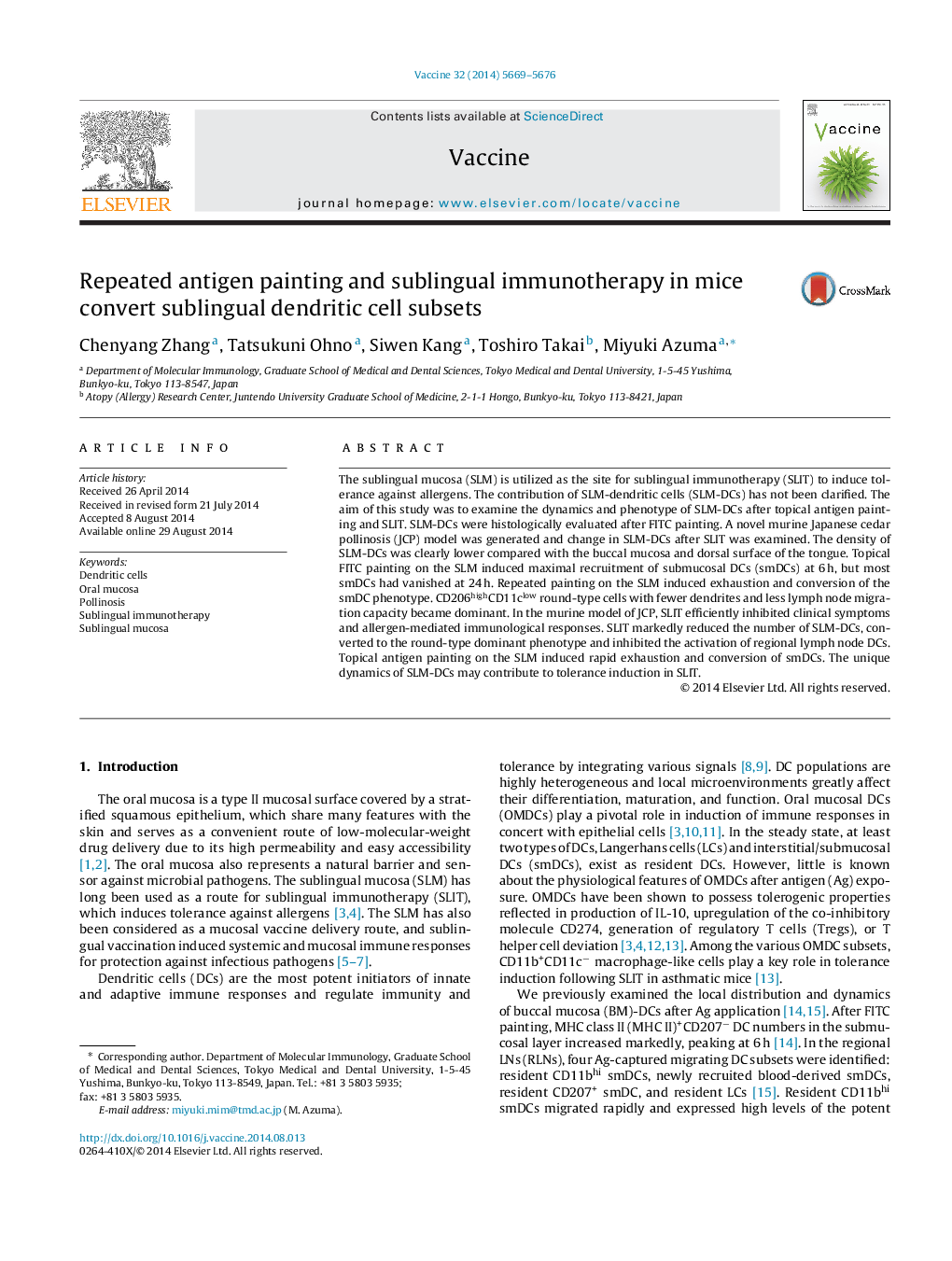| Article ID | Journal | Published Year | Pages | File Type |
|---|---|---|---|---|
| 10964313 | Vaccine | 2014 | 8 Pages |
Abstract
The sublingual mucosa (SLM) is utilized as the site for sublingual immunotherapy (SLIT) to induce tolerance against allergens. The contribution of SLM-dendritic cells (SLM-DCs) has not been clarified. The aim of this study was to examine the dynamics and phenotype of SLM-DCs after topical antigen painting and SLIT. SLM-DCs were histologically evaluated after FITC painting. A novel murine Japanese cedar pollinosis (JCP) model was generated and change in SLM-DCs after SLIT was examined. The density of SLM-DCs was clearly lower compared with the buccal mucosa and dorsal surface of the tongue. Topical FITC painting on the SLM induced maximal recruitment of submucosal DCs (smDCs) at 6Â h, but most smDCs had vanished at 24Â h. Repeated painting on the SLM induced exhaustion and conversion of the smDC phenotype. CD206highCD11clow round-type cells with fewer dendrites and less lymph node migration capacity became dominant. In the murine model of JCP, SLIT efficiently inhibited clinical symptoms and allergen-mediated immunological responses. SLIT markedly reduced the number of SLM-DCs, converted to the round-type dominant phenotype and inhibited the activation of regional lymph node DCs. Topical antigen painting on the SLM induced rapid exhaustion and conversion of smDCs. The unique dynamics of SLM-DCs may contribute to tolerance induction in SLIT.
Related Topics
Life Sciences
Immunology and Microbiology
Immunology
Authors
Chenyang Zhang, Tatsukuni Ohno, Siwen Kang, Toshiro Takai, Miyuki Azuma,
